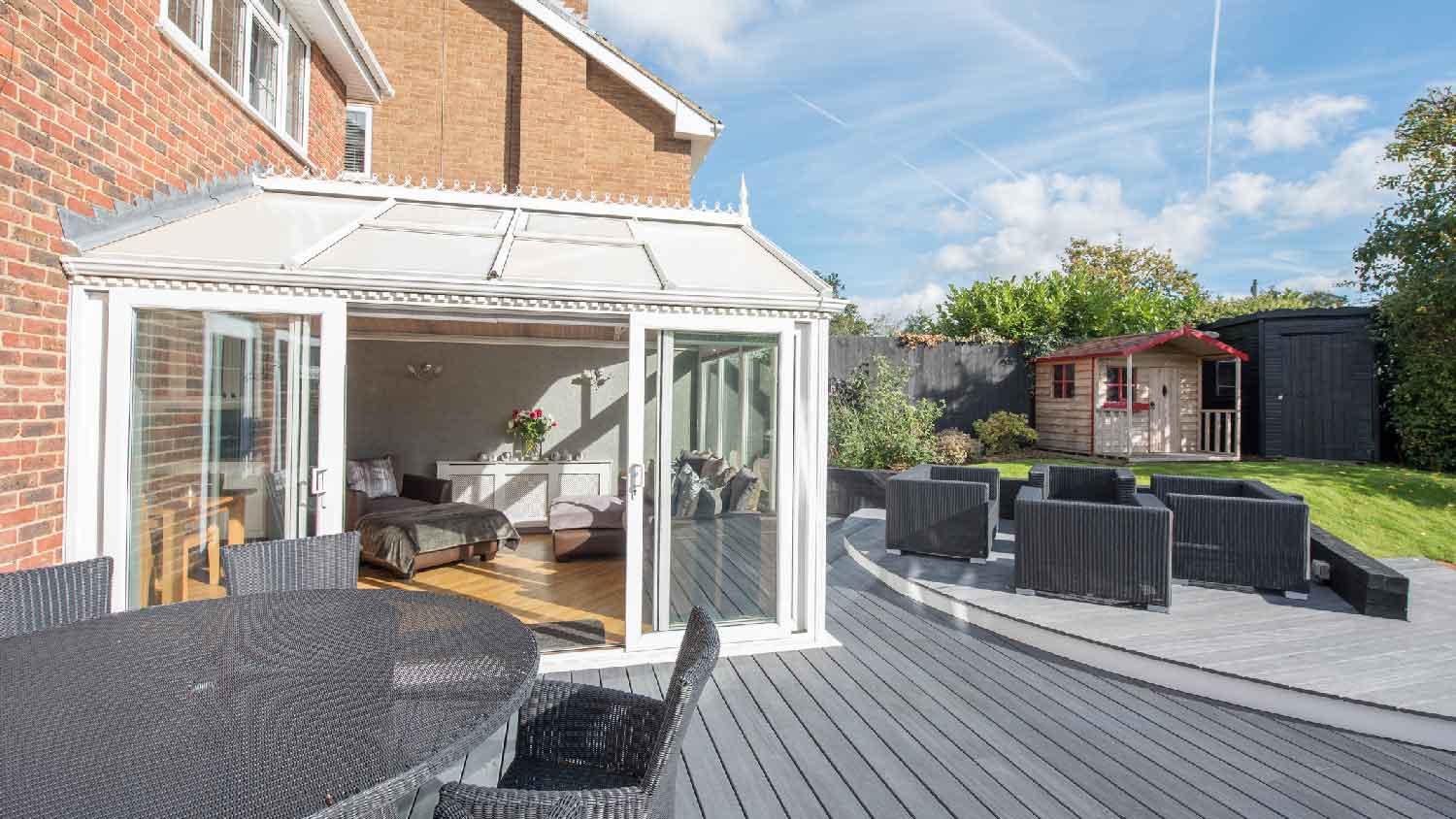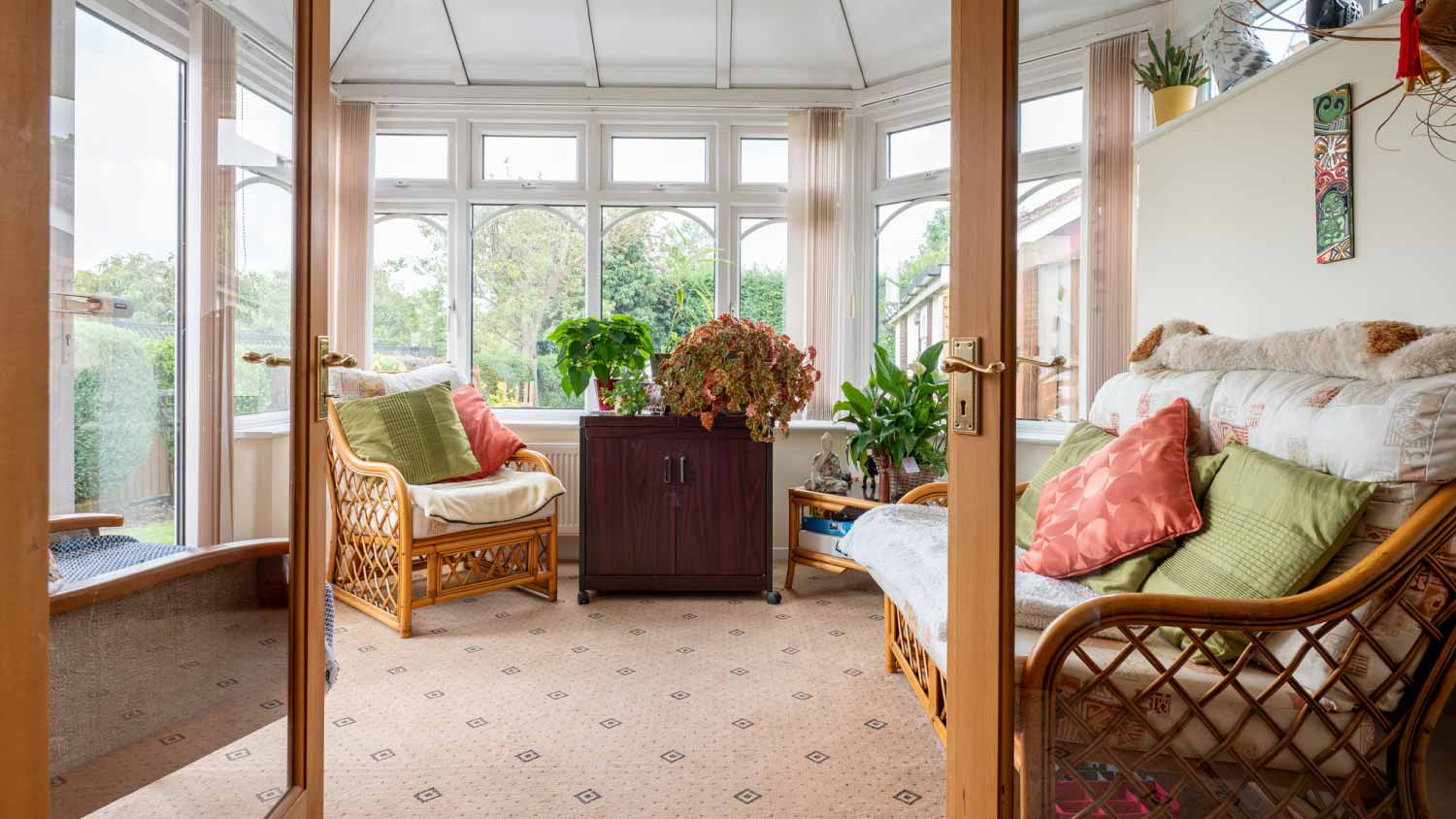
Use our expert guide to figure out how much it costs to install a pool enclosure. Establish your budget, then plan your pool enclosure project.
Bring the great outdoors inside with this home addition


Florida rooms are sunrooms enclosed by mesh screens or partial walls and windows.
These rooms let you enjoy the outdoors without insects, direct sun, or yard debris.
Florida rooms are attached to the back or side of the house, often off the kitchen or living room.
Florida is known for its hot, sunny weather, and Florida rooms are a great way to enjoy that weather with all the comforts of the indoors. Florida rooms aren’t limited to their namesake state—they’re found throughout the country, so homeowners can enjoy the outdoors without pesky insects, direct sun, or yard debris in the way. Our guide explores what Florida rooms are and why they can be a great addition to any home.
Florida rooms are a type of sunroom, also known as garden rooms or three- or four-season rooms, and consist of one wall attached to the back or side of a home, a roof, and three walls of mesh screens or windows, sometimes with partial low walls. These rooms allow you to enjoy the warm weather without having to sit in direct sun, fend off insects, or constantly sweep up yard debris. Florida rooms vary widely in style, use, and construction but generally match the rest of the home from the outside. Florida rooms with only mesh screens are considered three-season rooms, while those that have low walls and glass windows are classified as four-season rooms.
Florida rooms can be customized for a wide range of uses, including:
Lounge or living room with outdoor furniture
Kids’ playroom
Semi-outdoor dining space
Entertaining space
Greenhouse or conservatory
With so many types of sunrooms, you may be confused about what sets a Florida room apart. Unlike California rooms, lanais, and covered porches, Florida rooms are fully enclosed with mesh walls or windows. Glass windows are more common in Florida rooms than Arizona rooms, although the two names are often used interchangeably. Screened porches are most often attached to the front of a home and use outdoor flooring or decking, while Florida rooms are found off the back or side of a home and have indoor/outdoor flooring like tile or waterproof laminate.

Building a sunroom addition costs an average of $22,000 to $73,000, and Florida room costs will run toward the middle or higher end of that average. A local sunroom contractor can design and build a Florida room that integrates seamlessly with your home’s design—choose a pro who builds sunrooms in the style you’re looking for.
A sunroom can add value to your home, so it’s a good return on investment when it comes time to sell. Whether or not your Florida room counts toward your home’s square footage depends on how it was built, local regulations, and more, so check local codes to learn if it’ll add to your square footage or simply be a valuable add-on.
From average costs to expert advice, get all the answers you need to get your job done.

Use our expert guide to figure out how much it costs to install a pool enclosure. Establish your budget, then plan your pool enclosure project.

When you're ready to kick back and enjoy nature without the bugs, a sunroom is your best option. Learn how much a sunroom addition costs to set your budget.

Love soaking up sun but can’t stand the bugs? Learn how much a Florida room addition costs and what factors influence the price to get the best of both worlds.

What are the types of screens for porches you can choose from to take your humble abode to the next level? And what makes each of them unique? Find out here.

A screened-in porch keeps the bugs out while you enjoy the summer breeze. Learn if you need a permit for a screened-in porch and the risks of not pulling one.

Enjoy the outdoors without being exposed to the elements with an Arizona room. Learn what an Arizona room is and why it may be a great addition to your home.